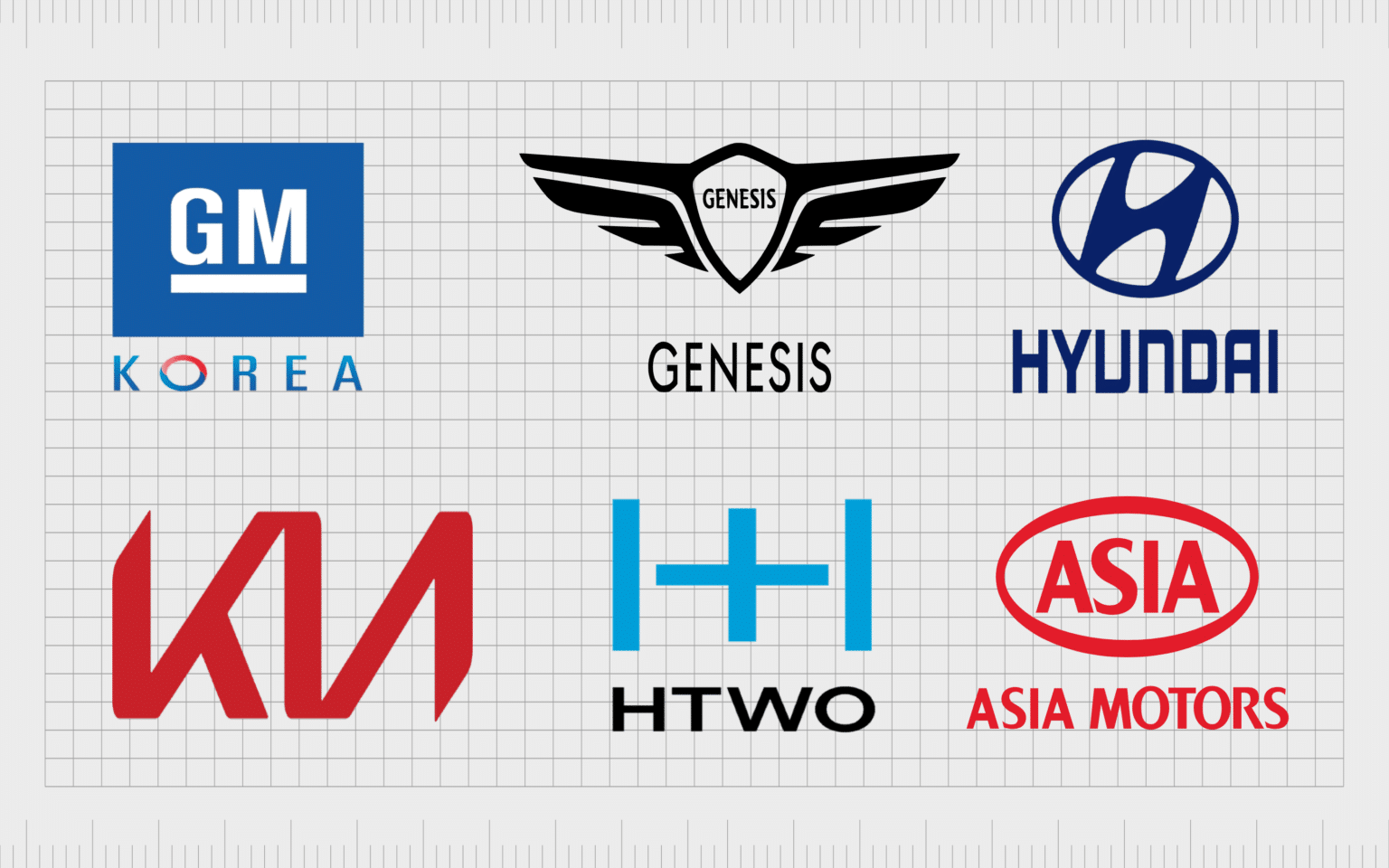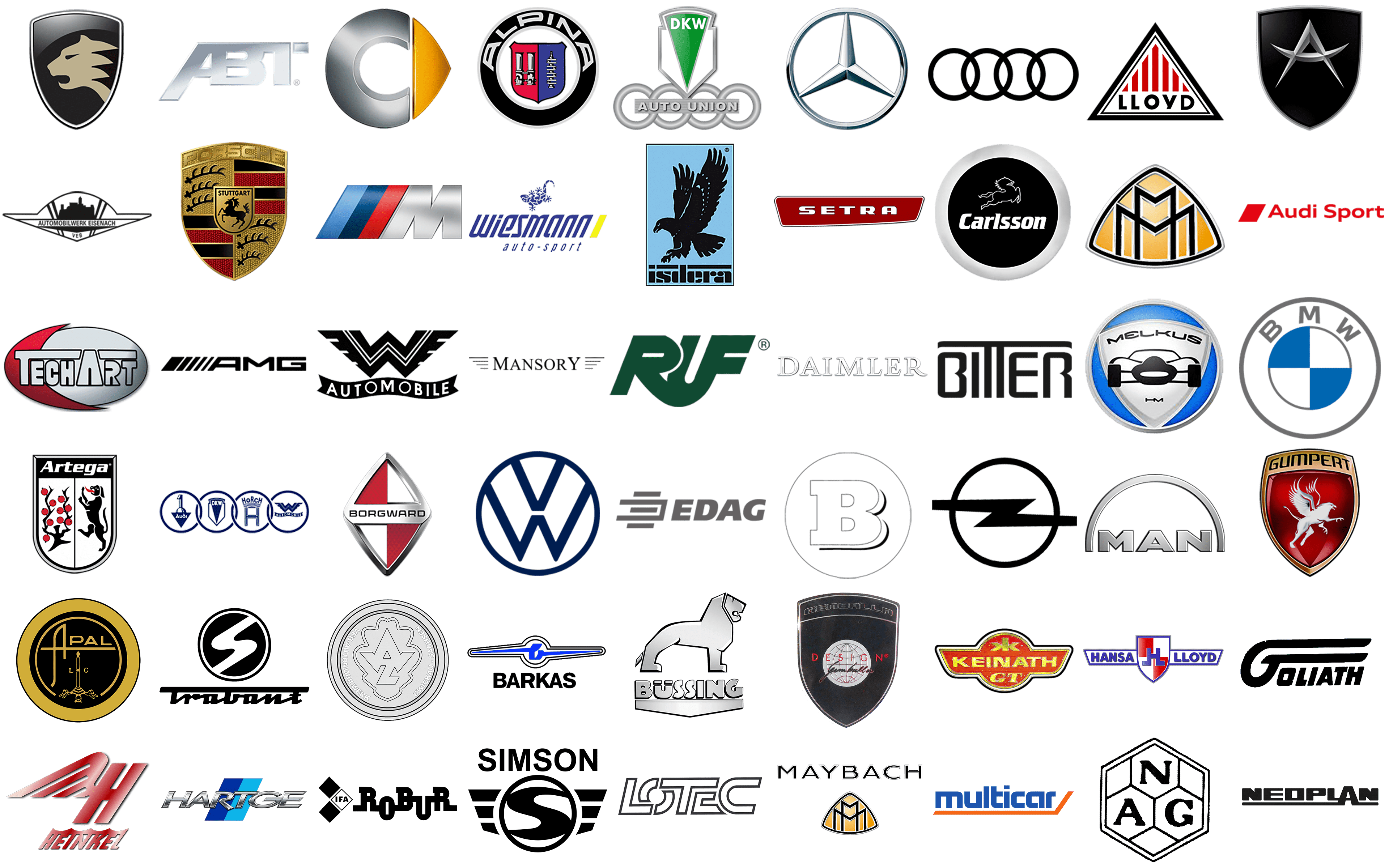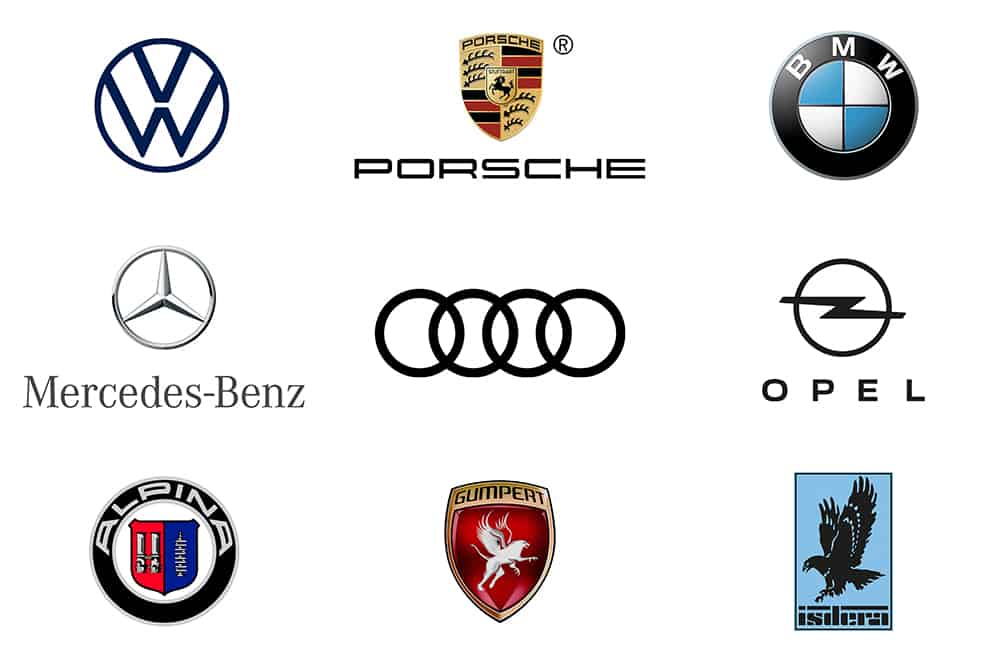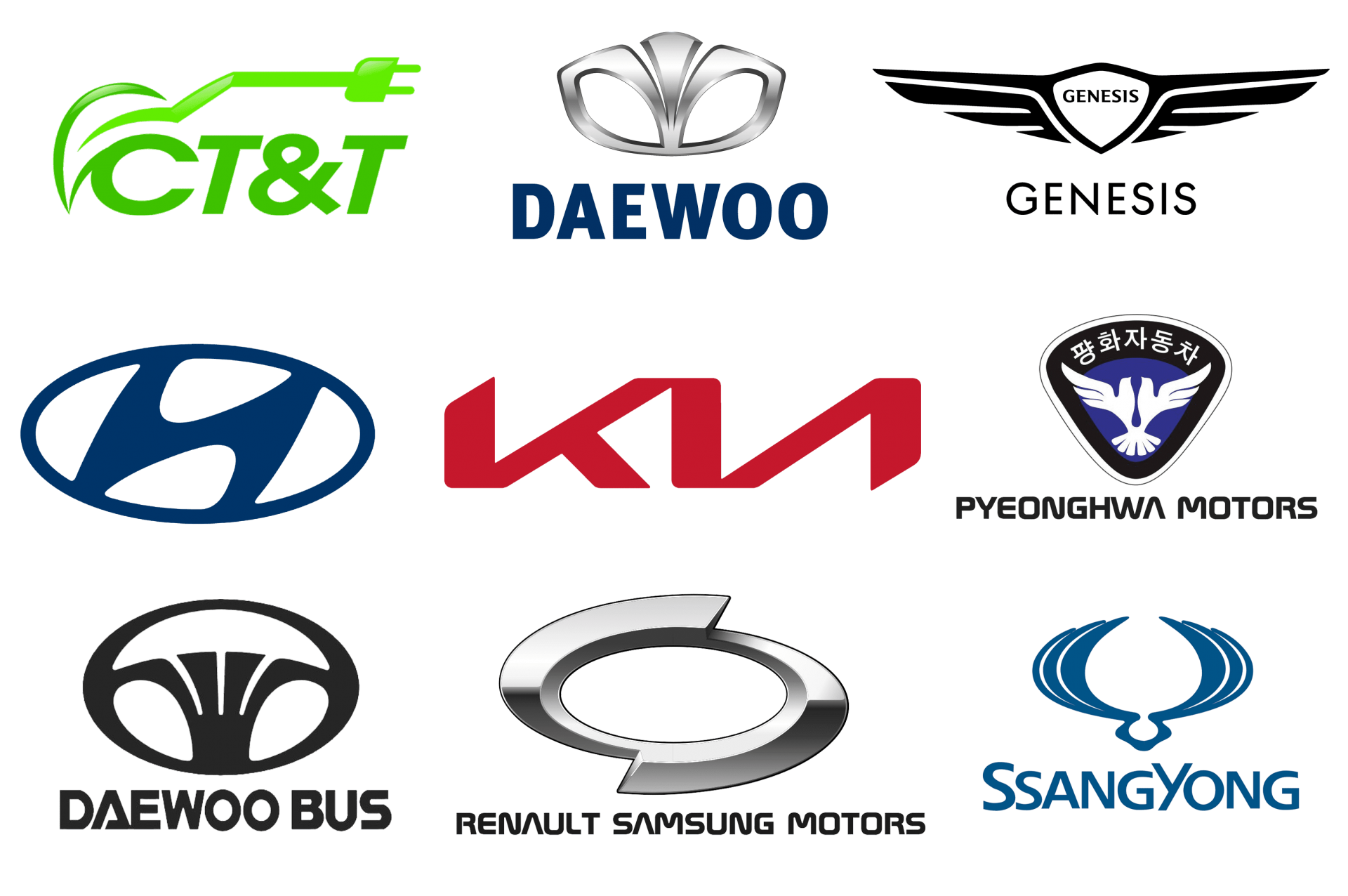Automobile Company History and Models: A Journey Through Time delves into the captivating saga of the automobile industry, tracing its evolution from its humble beginnings to its current state of technological marvels. This journey explores the pioneering minds who shaped the industry, the iconic companies that rose to prominence, and the revolutionary car models that redefined transportation.
From the first horseless carriages to the sleek electric vehicles of today, the automobile has undergone a remarkable transformation. This exploration will examine the key milestones, innovations, and influential figures that have shaped this dynamic industry. We will uncover the stories behind iconic car models, delve into the engineering marvels that drive these vehicles, and explore the future of automotive technology.
The Rise of the Automobile
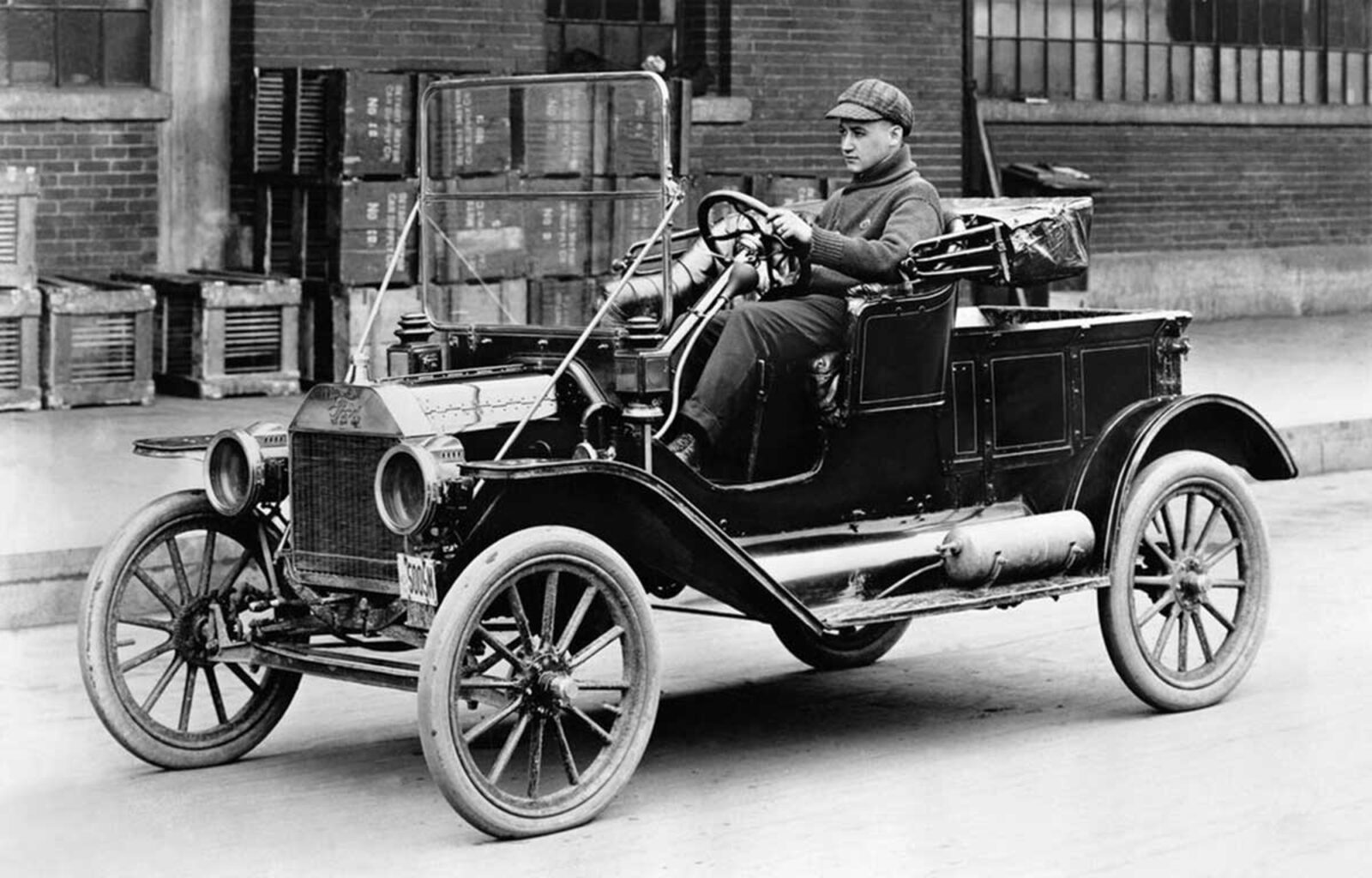
The automobile, a symbol of freedom and progress, has revolutionized transportation and shaped the modern world. Its journey from a rudimentary invention to a sophisticated marvel of engineering is a testament to human ingenuity and the relentless pursuit of innovation.
The story of the automobile’s rise is intertwined with the contributions of numerous pioneers who dared to dream of a world where self-propelled vehicles would transform the way people lived and worked.
Early Pioneers and Their Contributions
The invention of the automobile is often attributed to Karl Benz, a German engineer who patented his first gasoline-powered vehicle in 1886. Benz’s three-wheeled “Motorwagen” was a groundbreaking invention that laid the foundation for the modern automobile. However, the history of the automobile is more complex than a single invention.
Several other inventors and engineers played crucial roles in its development.
- Gottlieb Daimler, a contemporary of Benz, independently developed a high-speed internal combustion engine in 1886. He later collaborated with Wilhelm Maybach to create the first four-wheeled automobile, the Daimler Motor Carriage, in 1889.
- Henry Ford, an American industrialist, is credited with revolutionizing automobile production through the implementation of the assembly line. His Model T, introduced in 1908, was the first mass-produced car, making automobiles accessible to a wider segment of society.
- The Wright Brothers, famous for their pioneering work in aviation, also made significant contributions to the development of the automobile. Their innovative use of lightweight materials and aerodynamic principles influenced the design of early cars.
These pioneers, along with many others, laid the groundwork for the rapid development of the automobile industry in the early 20th century. Their inventions and innovations transformed the way people traveled, worked, and lived.
Understanding the history of automobile companies and their models can be fascinating, revealing the evolution of design, technology, and consumer preferences. This knowledge is particularly useful when considering insurance options, as different models may have varying safety features and insurance premiums.
For a comprehensive guide to obtaining a USAA insurance quote, visit Get a USAA Insurance Quote: A Comprehensive Guide. Once you’ve secured the right coverage, you can confidently explore the world of automobile history and models, from the early gasoline-powered cars to the sleek electric vehicles of today.
Evolution of Automobile Technology
The early automobiles were far from the sleek and sophisticated vehicles we see today. They were often unreliable, slow, and expensive. The early 20th century witnessed a remarkable evolution in automobile technology, driven by innovation, competition, and a growing demand for more powerful, efficient, and reliable vehicles.
- Early Internal Combustion Engines: The first automobiles were powered by rudimentary internal combustion engines that were prone to breakdowns and inefficient in fuel consumption. The development of more powerful and reliable engines, along with advancements in fuel injection and ignition systems, significantly improved the performance and efficiency of automobiles.
- Transmission Systems: The early automobiles used simple, manual transmissions that required the driver to shift gears manually. The introduction of automatic transmissions in the 1940s made driving more convenient and less demanding. Later advancements in transmission technology, such as the development of electronically controlled transmissions, further enhanced performance and fuel efficiency.
- Suspension and Steering: Early automobiles had basic suspension systems that provided limited comfort and handling. Advancements in suspension technology, such as the introduction of independent suspension and coil springs, improved ride quality and handling significantly. Steering systems also evolved from simple, manual steering mechanisms to power steering systems that made steering easier and more precise.
- Safety Features: Early automobiles lacked basic safety features, such as seat belts, airbags, and anti-lock brakes. The development and implementation of these safety features have drastically reduced the number of fatalities and injuries in road accidents.
These advancements in automobile technology have made vehicles more powerful, efficient, reliable, and safe. They have also paved the way for the development of new features and technologies, such as electronic stability control, lane departure warning systems, and adaptive cruise control, which are further enhancing the driving experience and improving road safety.
Comparing Early Automobiles with Modern Vehicles
The differences between early automobiles and modern vehicles are vast. Early automobiles were simple machines with limited capabilities, while modern vehicles are complex technological marvels that offer a wide range of features and capabilities.
- Design and Engineering: Early automobiles were often characterized by their simple design and construction. They were typically made of heavy materials, such as wood and steel, and had basic suspension systems and steering mechanisms. Modern vehicles, on the other hand, are designed and engineered using advanced materials, such as lightweight alloys and composites, and incorporate sophisticated suspension systems, steering mechanisms, and electronic control systems.
- Performance and Efficiency: Early automobiles were slow and inefficient, with limited power and fuel economy. Modern vehicles, thanks to advancements in engine technology, transmission systems, and aerodynamics, offer significantly improved performance and fuel efficiency. They are also capable of reaching much higher speeds and can travel longer distances without refueling.
From the early days of the Model T to the sleek electric vehicles of today, the history of the automobile is a testament to innovation and progress. While land-based transportation has always been a priority for many, the allure of the water beckons some, and USAA offers specialized boat insurance for military members, like those who have served in the Navy, Boat Insurance Quote USAA: A Guide for Military Members.
Whether on the open sea or a calm lake, the freedom and enjoyment of boating can be enhanced with the right insurance coverage, allowing individuals to focus on the journey ahead, just as automotive pioneers did in their time.
- Safety Features: Early automobiles lacked basic safety features, such as seat belts, airbags, and anti-lock brakes. Modern vehicles are equipped with a wide range of safety features that significantly reduce the risk of accidents and injuries. These features include electronic stability control, lane departure warning systems, adaptive cruise control, and blind spot monitoring systems.
- Comfort and Convenience: Early automobiles were uncomfortable and lacked basic amenities. Modern vehicles, on the other hand, offer a wide range of comfort and convenience features, such as climate control, power windows, power seats, navigation systems, and entertainment systems.
The evolution of the automobile has been a journey of continuous innovation and improvement. From the rudimentary vehicles of the late 19th century to the sophisticated machines of today, the automobile has undergone a remarkable transformation. The pioneers who laid the foundation for this industry have left an enduring legacy, and the future of the automobile promises even greater advancements in technology, performance, and sustainability.
Iconic Automobile Companies
The 20th century witnessed the rise of iconic automobile companies that shaped the global automotive landscape. These companies, driven by innovation, technological advancements, and entrepreneurial spirit, transformed personal transportation and left an indelible mark on history.
Ford Motor Company
Ford Motor Company, founded by Henry Ford in 1903, revolutionized the automotive industry with its commitment to mass production and affordability. Ford’s Model T, introduced in 1908, became the first car to be mass-produced using the assembly line, making automobiles accessible to the average American.
This innovation lowered production costs, increased output, and established the foundation for modern automotive manufacturing.
- Key Milestones:
- 1903: Henry Ford founds the Ford Motor Company.
- 1908: The Ford Model T is introduced, marking the beginning of mass production.
- 1913: The first moving assembly line is implemented at Ford’s Highland Park plant, significantly increasing production efficiency.
- 1914: Ford introduces the $5-a-day minimum wage, a groundbreaking initiative that attracted skilled workers and improved employee morale.
- 1927: The Model T is discontinued after producing over 15 million units, paving the way for the Model A.
- Innovations:
- Mass production:Ford’s assembly line revolutionized manufacturing, making automobiles more affordable and accessible.
- $5-a-day minimum wage:This initiative improved worker morale, reduced turnover, and attracted skilled labor.
- Vertical integration:Ford controlled all aspects of production, from raw materials to distribution, ensuring quality and cost efficiency.
- Influential Figures:
- Henry Ford:The visionary founder of Ford Motor Company, who revolutionized manufacturing and made automobiles accessible to the masses.
- Charles Sorensen:Ford’s right-hand man, who played a key role in developing the assembly line and implementing mass production.
General Motors
General Motors (GM), founded in 1908, became the world’s largest automaker by diversifying its product portfolio and targeting different market segments. GM’s strategy of offering a wide range of vehicles, from budget-friendly Chevrolet to luxury Cadillac, allowed it to cater to diverse consumer needs and preferences.
From the Model T’s pioneering days to the sleek electric vehicles of today, the automobile industry has witnessed remarkable evolution. As these vehicles become increasingly sophisticated, safeguarding them with comprehensive insurance becomes paramount. For Rhode Island homeowners seeking tailored protection, Rhode Island Home Insurance Quotes: A Guide for Homeowners provides valuable insights on securing the right coverage.
Understanding the intricacies of insurance allows consumers to make informed decisions, ensuring peace of mind for their prized possessions, just as car enthusiasts cherish the history and models that have shaped the automotive landscape.
- Key Milestones:
- 1908: William C. Durant establishes General Motors, bringing together several struggling automobile companies.
- 1910s: GM expands its product portfolio by acquiring brands like Buick, Oldsmobile, and Cadillac.
- 1920s: Alfred P. Sloan Jr. introduces the concept of “planned obsolescence,” encouraging consumers to upgrade their vehicles regularly.
- 1930s: GM faces challenges during the Great Depression but emerges as a leader in the automotive industry.
- 1950s: GM introduces the Chevrolet Corvette, a sports car that became an iconic symbol of American automotive excellence.
- Innovations:
- Diversification:GM’s strategy of offering a wide range of vehicles, from budget-friendly to luxury, allowed it to capture a significant market share.
- Planned obsolescence:GM’s marketing strategy of encouraging consumers to upgrade their vehicles regularly, fueled sales and solidified its position in the market.
- Technological advancements:GM pioneered innovations such as automatic transmissions, power steering, and air conditioning, enhancing driving experience and comfort.
- Influential Figures:
- William C. Durant:The founder of General Motors, who brought together several struggling automobile companies and established the foundation for its success.
- Alfred P. Sloan Jr.:A visionary leader who transformed GM into a modern corporation and introduced the concept of “planned obsolescence.”
Toyota Motor Corporation
Toyota Motor Corporation, founded in 1937, emerged as a global automotive powerhouse through its focus on quality, reliability, and continuous improvement. Toyota’s production system, known as the Toyota Production System (TPS), emphasized efficiency, waste reduction, and customer satisfaction, setting a new standard for automotive manufacturing.
- Key Milestones:
- 1937: Kiichiro Toyoda founds Toyota Motor Corporation, focusing on manufacturing automobiles.
- 1947: Toyota introduces the Toyota Crown, its first passenger car, marking its entry into the post-war automotive market.
- 1950s: Toyota begins exporting vehicles to the United States, gradually establishing its presence in global markets.
- 1970s: Toyota introduces the Toyota Corolla, a compact car that becomes a global bestseller and symbol of fuel efficiency.
- 1980s: Toyota’s reputation for quality and reliability grows, leading to its dominance in the US market.
- Innovations:
- Toyota Production System (TPS):This system, based on lean manufacturing principles, emphasizes efficiency, waste reduction, and continuous improvement, setting a new standard for automotive manufacturing.
- Just-in-time (JIT) inventory management:TPS minimizes waste by producing only what is needed, reducing storage costs and inventory obsolescence.
- Kaizen:This philosophy of continuous improvement encourages employees to identify and implement improvements in all aspects of production.
- Influential Figures:
- Kiichiro Toyoda:The founder of Toyota Motor Corporation, who envisioned a company focused on quality and customer satisfaction.
- Eiji Toyoda:Kiichiro’s son, who played a key role in developing the Toyota Production System and establishing Toyota’s reputation for quality.
- Taiichi Ohno:A pioneer in lean manufacturing, who developed the Toyota Production System and its key principles.
Volkswagen
Volkswagen, founded in 1937, rose to prominence with its iconic Beetle model, which became a symbol of affordability and practicality. The company’s success was also driven by its focus on engineering excellence, innovative designs, and its commitment to expanding its product portfolio.
- Key Milestones:
- 1937: The Volkswagenwerk GmbH is established by the German government to produce the “people’s car,” the Volkswagen Beetle.
- 1945: After World War II, Volkswagen production resumes under British control.
- 1950s: The Volkswagen Beetle becomes a global phenomenon, selling millions of units worldwide.
- 1970s: Volkswagen expands its product line with models like the Golf and Passat, targeting a wider market segment.
- 1990s: Volkswagen acquires several European brands, including Audi, Seat, and Skoda, creating a global automotive giant.
- Innovations:
- Volkswagen Beetle:This iconic car, designed by Ferdinand Porsche, became a symbol of affordability and practicality, revolutionizing automotive design.
- Air-cooled engine:The Beetle’s air-cooled engine, a unique feature at the time, offered simplicity and durability.
- Modular platform:Volkswagen’s MQB platform allows for the production of multiple models on a single platform, reducing costs and increasing efficiency.
- Influential Figures:
- Ferdinand Porsche:The designer of the Volkswagen Beetle, who revolutionized automotive design and made cars accessible to the masses.
- Heinz Nordhoff:The CEO of Volkswagen from 1948 to 1968, who played a key role in reviving the company after World War II and establishing its global presence.
Evolution of Automobile Models
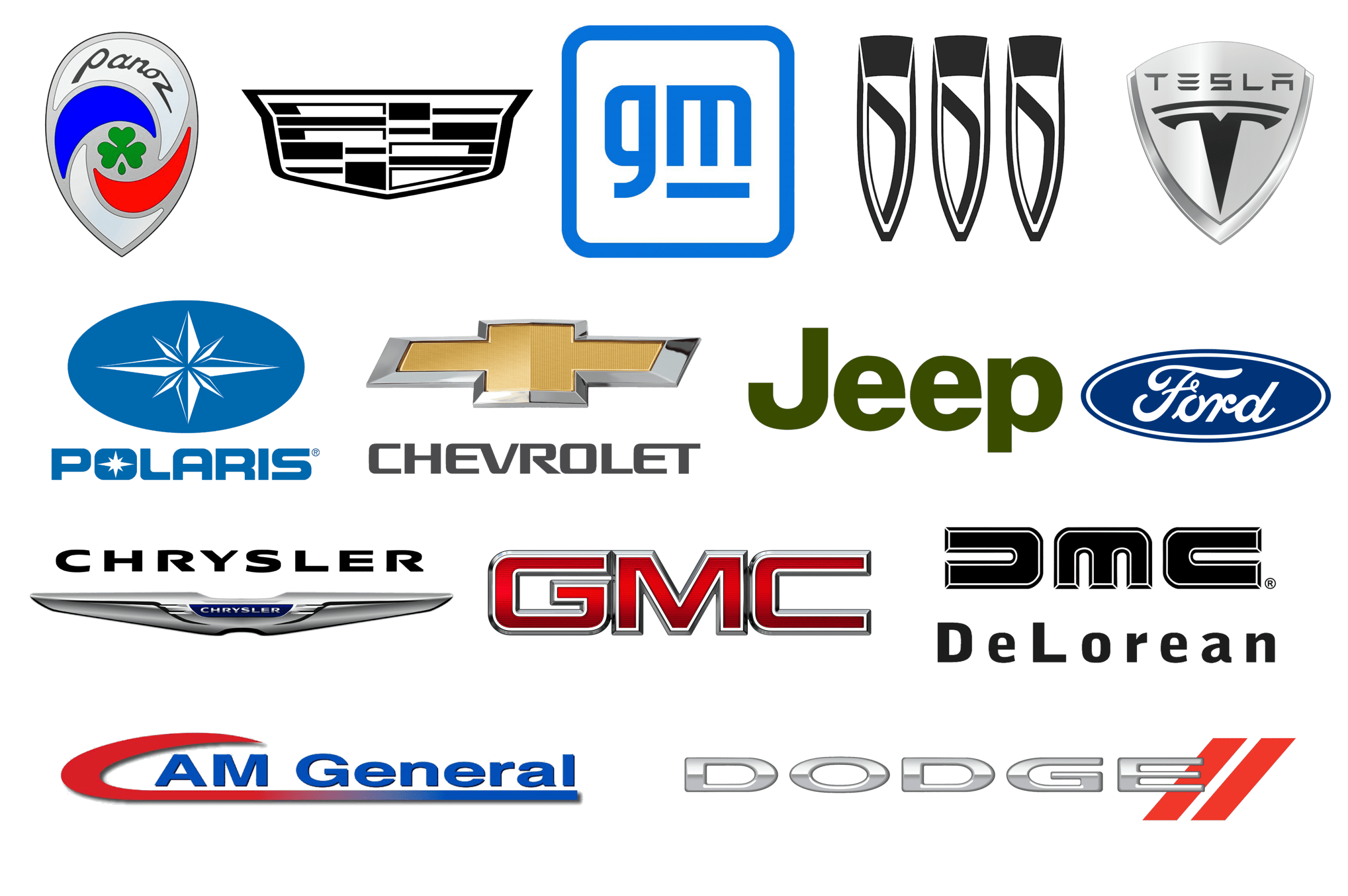
The automobile has undergone a remarkable evolution since its inception, with advancements in technology, design, and functionality shaping the vehicles we drive today. From the early horseless carriages to the sophisticated automobiles of the 21st century, the journey has been marked by innovation and a constant pursuit of better performance, safety, and comfort.
Evolution of Popular Car Models
The evolution of popular car models is a testament to the ingenuity and adaptability of the automotive industry. Over time, car manufacturers have responded to changing consumer demands, technological advancements, and evolving societal trends. Here’s a glimpse into the evolution of some iconic car models:
| Model | Year | Key Features | Engine Specifications | Design Changes |
|---|---|---|---|---|
| Ford Model T | 1908 | Affordable, mass-produced, simple design | 2-cylinder, 20 hp | Simple, utilitarian design with a black paint scheme |
| Ford Model T | 1927 | Improved reliability, more powerful engine | 4-cylinder, 40 hp | Refined design with more rounded features |
| Volkswagen Beetle | 1938 | Compact, affordable, rear-engine design | 4-cylinder, 25 hp | Distinctive rounded shape with a unique air-cooled engine |
| Volkswagen Beetle | 1979 | Improved safety features, more powerful engine | 4-cylinder, 50 hp | Updated styling with more modern features |
| Toyota Corolla | 1966 | Reliable, fuel-efficient, compact sedan | 4-cylinder, 60 hp | Simple, practical design with a focus on affordability |
| Toyota Corolla | 2023 | Advanced safety features, hybrid powertrain options, spacious interior | 4-cylinder, 169 hp (hybrid) | Modern, sleek design with advanced technology features |
Iconic Car Models that Revolutionized the Industry, Automobile Company History and Models
Certain car models have left an indelible mark on the automotive industry, not only for their technological advancements but also for their impact on design and consumer preferences.
- Ford Model T: The Ford Model T, often referred to as the “Tin Lizzie,” revolutionized the automotive industry by making cars accessible to the masses. Its affordable price, simple design, and mass production paved the way for the modern automotive industry.
- Volkswagen Beetle: The Volkswagen Beetle, a symbol of post-war Germany, became a global phenomenon. Its compact size, affordability, and distinctive design made it a popular choice for families and individuals around the world. The Beetle’s success demonstrated the appeal of a car that was both practical and stylish.
- Mini Cooper: The Mini Cooper, a small but mighty car, gained popularity for its agile handling and fun-to-drive nature. Its unique design, with its small size and large wheels, became iconic and influenced the design of many subsequent compact cars.
- Toyota Prius: The Toyota Prius, a pioneer in hybrid technology, revolutionized the automotive industry by demonstrating the viability of fuel-efficient vehicles. Its success paved the way for the widespread adoption of hybrid and electric vehicles.
Development of Specific Vehicle Types
The automotive industry has developed a wide range of vehicle types to cater to diverse needs and preferences. Each type has unique characteristics that make it suitable for specific purposes.
- Sedans: Sedans are known for their comfortable interiors, spacious cabins, and fuel efficiency. They are typically designed for daily commuting and family use.
- SUVs: SUVs offer a combination of practicality, versatility, and off-road capability. Their high ground clearance, spacious interiors, and often powerful engines make them popular for families, outdoor enthusiasts, and those who need a more robust vehicle.
- Trucks: Trucks are designed for heavy-duty tasks, such as hauling cargo or towing trailers. They are known for their durability, strength, and large cargo capacity.
- Sports Cars: Sports cars are designed for performance and driving pleasure. They typically feature powerful engines, aerodynamic designs, and handling that is tailored for speed and agility.
The Future of the Automobile: Automobile Company History And Models
The automotive industry is on the cusp of a dramatic transformation, driven by technological advancements and changing consumer preferences. Electric vehicles, autonomous driving, and connected car technologies are reshaping the way we design, manufacture, and own cars. These trends are poised to redefine the automotive landscape, ushering in an era of unprecedented innovation and efficiency.
The Rise of Electric Vehicles
The adoption of electric vehicles (EVs) is accelerating rapidly, fueled by government incentives, falling battery costs, and growing consumer demand for environmentally friendly transportation. EVs offer several advantages over traditional gasoline-powered vehicles, including lower operating costs, reduced emissions, and quieter operation.
- Increased Range and Performance:Advancements in battery technology are driving significant improvements in EV range and performance. For example, the Tesla Model S Plaid boasts a range of over 400 miles and a 0-60 mph acceleration time of under 2 seconds.
- Growing Infrastructure:The expansion of charging infrastructure is crucial for widespread EV adoption. Governments and private companies are investing heavily in charging stations, making it easier for EV owners to recharge their vehicles.
- Government Incentives:Many governments offer tax credits and other incentives to encourage EV adoption. These incentives help to offset the higher upfront cost of EVs, making them more accessible to consumers.
Autonomous Driving
Autonomous driving technology is another transformative trend in the automotive industry. Self-driving cars have the potential to revolutionize transportation, improving safety, efficiency, and accessibility.
- Enhanced Safety:Autonomous vehicles are equipped with advanced sensors and software that can react faster and more accurately than human drivers, potentially reducing accidents significantly. Studies have shown that autonomous vehicles could reduce traffic fatalities by up to 90%.
- Increased Efficiency:Autonomous vehicles can optimize their routes and driving styles, reducing fuel consumption and traffic congestion. They can also operate 24/7, maximizing vehicle utilization and reducing the need for multiple car ownership.
- Accessibility:Autonomous vehicles can provide transportation options for individuals who are currently unable to drive, such as the elderly, disabled, or those without access to a personal vehicle. This can improve mobility and independence for a wider range of people.
Connected Car Technologies
Connected car technologies are transforming the driving experience, offering enhanced connectivity, entertainment, and safety features. These technologies connect vehicles to the internet and other devices, enabling drivers to access a wide range of services and information.
- Real-Time Traffic and Navigation:Connected cars can receive real-time traffic updates and navigate efficiently, avoiding congestion and reducing travel time. They can also provide information about parking availability, gas prices, and other relevant information.
- Remote Monitoring and Control:Connected car technologies allow drivers to remotely monitor their vehicles, lock and unlock doors, and even start the engine from their smartphones. This can enhance convenience and security.
- Advanced Safety Features:Connected cars can provide advanced safety features, such as automatic emergency braking, lane departure warning, and adaptive cruise control. These features can help to prevent accidents and improve driver safety.
Concept Car for 2050
The “Aerion” concept car for 2050 embodies the future of automotive design and technology. This sleek, aerodynamic vehicle features a lightweight carbon fiber body, solar panels integrated into the roof, and a fully autonomous driving system. The Aerion is powered by a hydrogen fuel cell, emitting only water vapor as a byproduct.
- Sustainable Design:The Aerion’s design prioritizes sustainability, with its lightweight construction and renewable energy sources minimizing environmental impact.
- Advanced Autonomous Technology:The car is equipped with advanced sensors and artificial intelligence (AI) that enable fully autonomous driving, enhancing safety and efficiency.
- Personalized Experience:The Aerion’s interior features a spacious and comfortable cabin with personalized seating, lighting, and climate control, creating a truly immersive driving experience.
Ending Remarks
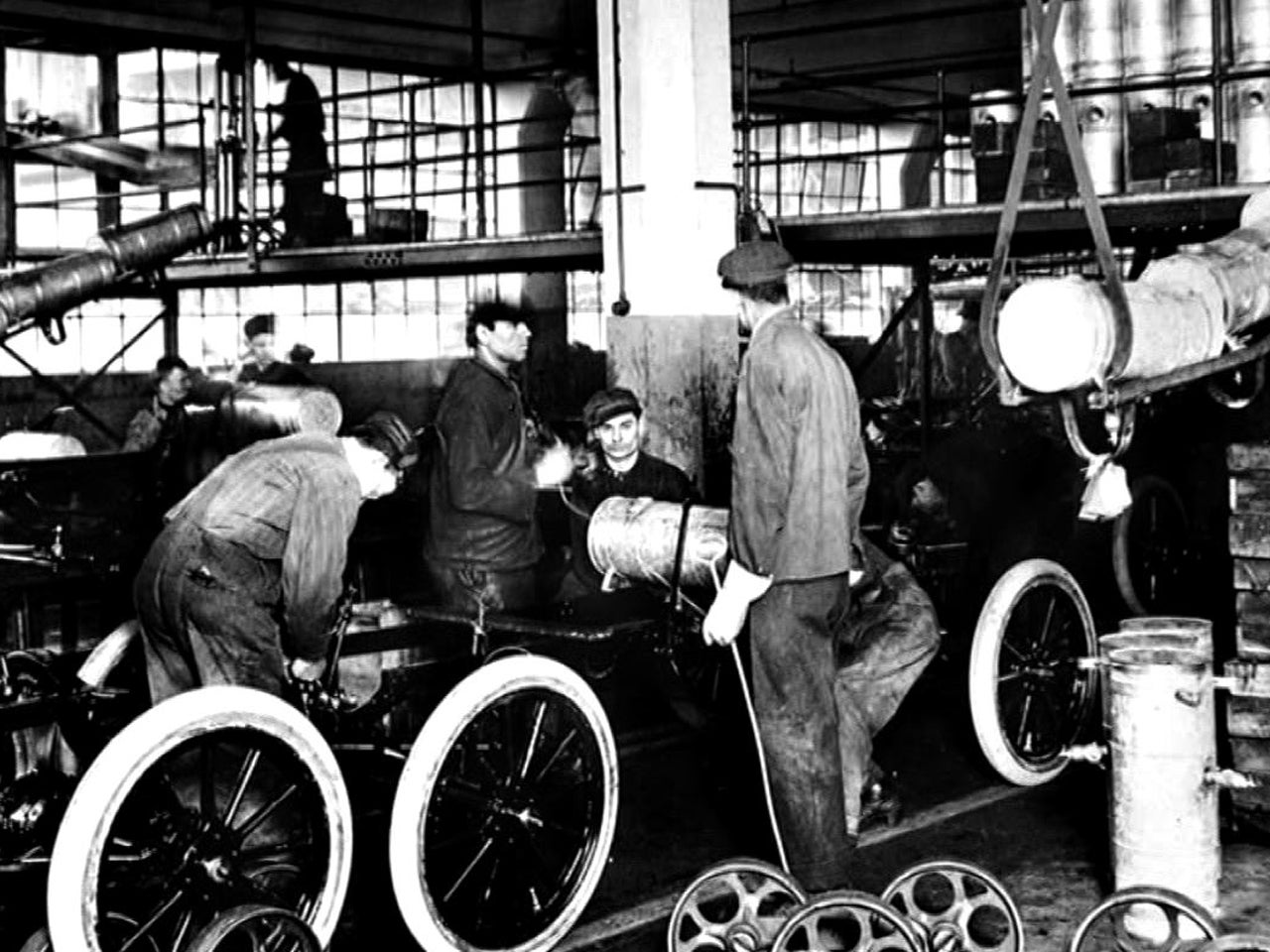
As we journey through the history of automobile companies and their models, we gain a deeper appreciation for the ingenuity, innovation, and sheer determination that have driven this industry. From the early pioneers to the visionaries shaping the future, the automobile industry continues to captivate and inspire.
The future holds exciting possibilities, with advancements in electric vehicles, autonomous driving, and connected car technologies poised to revolutionize the way we travel and interact with our vehicles. This journey through time serves as a testament to the enduring power of human ingenuity and the transformative impact of the automobile on society.
